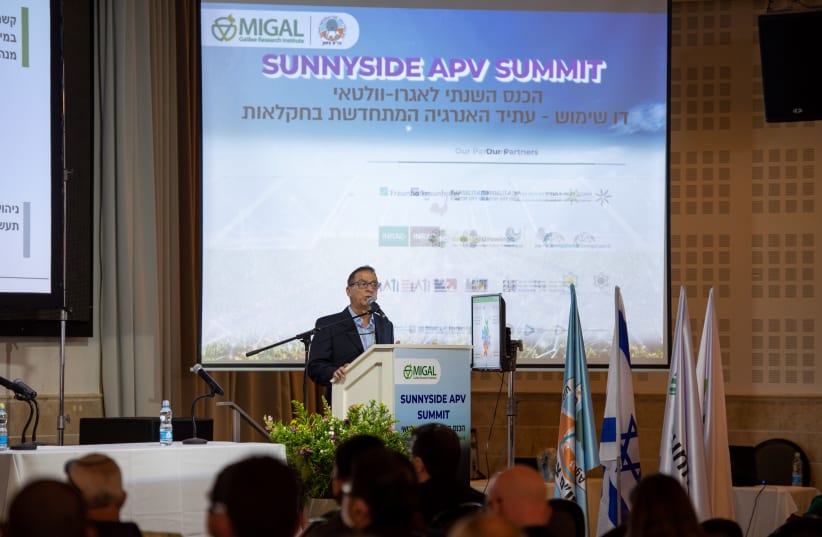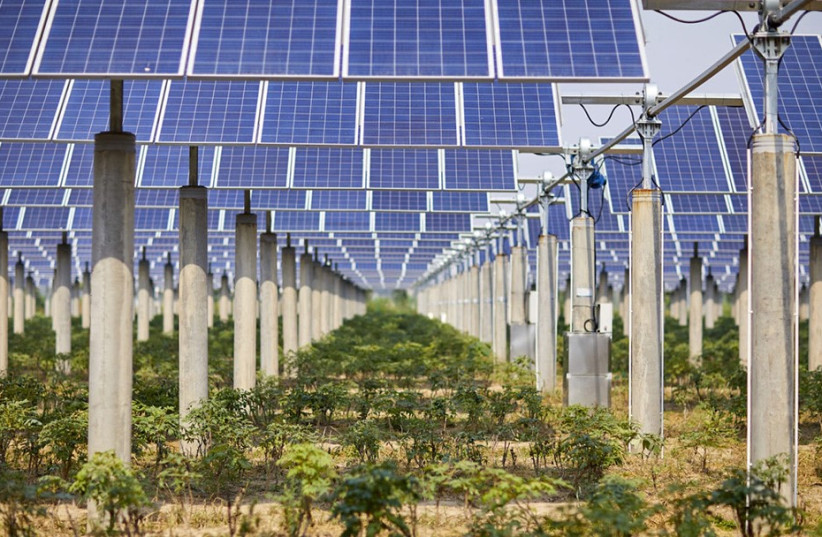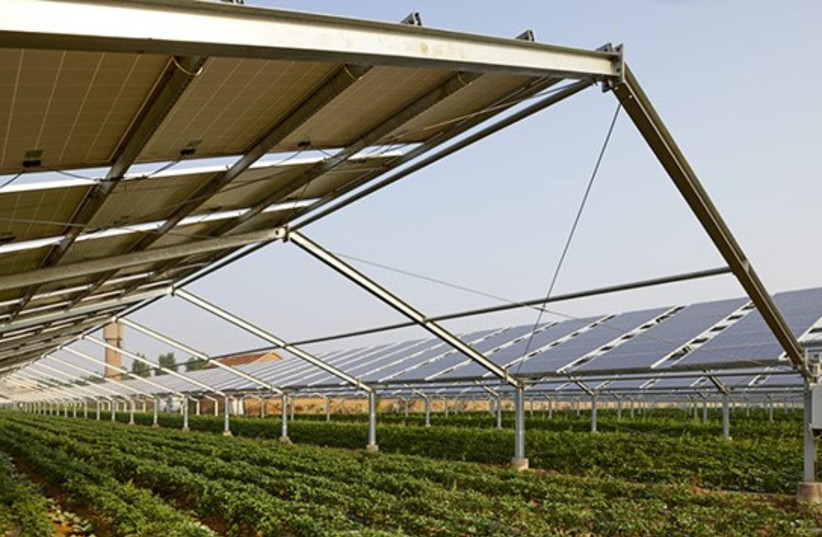SunnySide APV Summit 2023, initiated by the MIGAL institute and supported by government officials and renewable energy companies, will take place this March.
As it's becoming more evident that climate change is affecting every aspect of our lives, the need for more sustainable solutions is imminent. Two critical aspects of the problem are the search for renewable energy sources and the need to adapt how we grow food to harsher and less predictable climate conditions. In the past, researchers have looked separately at these issues, developing means for solar power generation and rethinking agricultural techniques. However, in the last few years, more and more data has been accumulated on the advantages of Agrivoltaic technology: the use of agricultural land for growing crops and generating solar power simultaneously.
Combining solar panels and farming promises to enhance land-use efficiency, provide climate solutions, create sustainable food, and support local economies. Research done at Oregon State University showed that co-developing land for solar photovoltaic power and agriculture could provide 20% of total electricity generation in the United States with an investment of less than 1% of the annual U.S. budget. SunnySide APV Summit 2023, which will take place in the north of Israel this March, will take a deeper look at this promising potential.
One solution - Many advantages:
The idea behind Agrivoltaic systems is simple: semi or non-transparent solar arrays, with or without tracers, are installed on platforms above the crops, high enough for farmers to carry out their ongoing agricultural activities. Different Agrivoltaic configurations combine PV with croplands, pastures, or pollinator habitats and contribute to achieving sustainable energy and food goals. Experiments in a variety of regions have provided initial data supporting the approach's multi-faced advantages, including:
Protecting Crops: in areas of extreme heat, the shade produced by solar arrays reduces water consumption and shields crops from over-exposure. In extreme cold, the platform can reduce frostbite and the impact of hail, wind, and heavy rain.
Improving power generation: Contrary to popular belief, solar power generation improves when temperatures remain temperate. In hot/dry climates, installing solar panels within irrigated fields helps optimize their production.
Optimizing land use: a significant challenge in using solar power is the massive amount of land needed for utility-scale power generation and the need to transfer the generated electricity across large distances. Agrivoltaic uses existing farmland, much of which is already located close to metropolitan centers.
Providing income for farmers: small farmers worldwide face fundamental challenges. Agrivoltaic offers them the potential to expand the income-generating provision of their land without significant changes to their farming activities.
Reducing CO2 emissions: Researchers estimate that wide-scale installation of Agrivoltaic systems could lead to an annual reduction of 330,000 tons of carbon dioxide emissions in the U.S. – the equivalent of 75,000 cars off the road per year – and the creation of more than 100,000 jobs in rural communities.
Israel: world leader in Agrivoltaics
Israel is the first country in the world that's conducting national research in Agrivoltaic. In an official report published last week, the Israeli Energy Ministry announced that "Israel has adopted a goal of converting 30% of all its electricity production to sustainable sources by 2030. No other alternative exists to creating this energy other than photovoltaic panels." The ministry has already approved a plan to include more than 100 agricultural plots with a wide range of crops in a pilot of solar energy production.
At the forefront of Israel's Agrivoltaics is MIGAL Institute - An internationally-recognized and multidisciplinary applied research institute of the Israeli Ministry of Science and Technology, owned by the Galilee Development Company. MIGAL has established the first AGRIVOLTAICS Knowledge Center bringing together experts interested in this technology.
The center sees immense potential in using AGRIVOLTAICS in various applications and is planning to examine its use in the growth of crops as varied as avocados and algae, kiwis, and grapes, field and raw crops, apples and bananas, and many others in more than 50 pilots in the frame of the national pilot led by the Ministry of Agriculture and the Ministry of Energy Last year, the Institute held the first worldwide summit for AGRIVOLTAICS, bringing together different parties involved in this promising field.
Join the conversation:
If you'd like to be part of the exciting discussion about the potential of AGRIVOLTAICS for the future of renewable energy in Israeli and global agriculture, don't miss MIGAL's 2nd annual event dedicated to advancing Agriphotovoltaic technologies.
The SunnySide 2023 summit will be held on March 1-2, 2023, in upper Galilee, northern Israel, at the luxurious Galilion hotel. It will feature lectures, panels, and multidisciplinary round tables involving governmental officials, experts, energy companies, farmers, and research institutes.
Tickets are still available for individuals and companies involved in the growing AGRIVOLTAICS field and everyone who wants to participapate in the development of renewable energy in agriculture.
Book your ticket now SunnySide APV >>
This article was written in cooperation with MIGAL Galilee Research Institute


